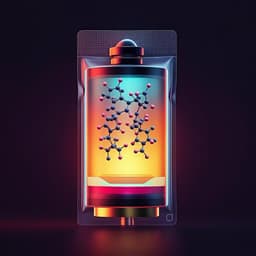
Engineering and Technology
Alkaline-based aqueous sodium-ion batteries for large-scale energy storage
H. Wu, J. Hao, et al.
Discover how a novel alkaline-type aqueous sodium-ion battery, developed by a team of researchers including Han Wu and Junnan Hao from The University of Adelaide, achieved an impressive energy density of 88.9 Wh kg⁻¹ and remarkable durability with 13,000 cycles at 10 C, transforming energy storage potential.
~3 min • Beginner • English
Related Publications
Explore these studies to deepen your understanding of the subject.







